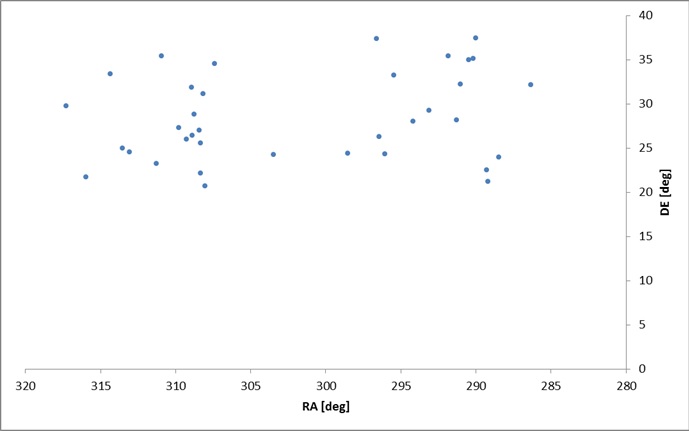The weather in september was very favourable for CAMS.
Most stations could collect data with their systems for at least 29 nights.
As a result, a total of 3982 orbits could be collected, among these several streams from the IAU meteor database (table 1).
CAMS BeNeLux data IAU meteor database
# Vg i ω Vg i ω
206 AUR 11 67,1 150,2 113,5
208 SPE 77 64 139,2 245,3 64,5 138,9 241,9
210 BAU 11 65,2 142,8 197,7 66,5
216 SPI 34 28,2 6,8 132,3 27 6,9 127,3
219 SAR 20 36,2 16,4 321,2 36,5 18,9 324,9
416 SIC 10 52,1 94,8 215,2 50
424 SOL 5
430 POR 10 67,8 153,4 47,6 68 154,1 46,3
479 SOO 8 66,4 157,4 57,9 67,6 159,9 57,6
76 KAQ 5
81 SLY 11 60,3 117,4 120,3 61
On September 24th at 19:19 UT the 50 000 orbit since the start of our network in march 2012, was confirmed.
Last year CAMS detected activity from Cygnus. We looked at the data whether this stream (757) CCY showed activity again.
Figure 1 shows all radiantpositions in the period of (757) CCY – activity last year from a broad region around the theoretical CCY-radiant with orbital elements corresponding to the theoretical elements of this CCY-stream.
It seems that activity from this stream was not substantial this year.






